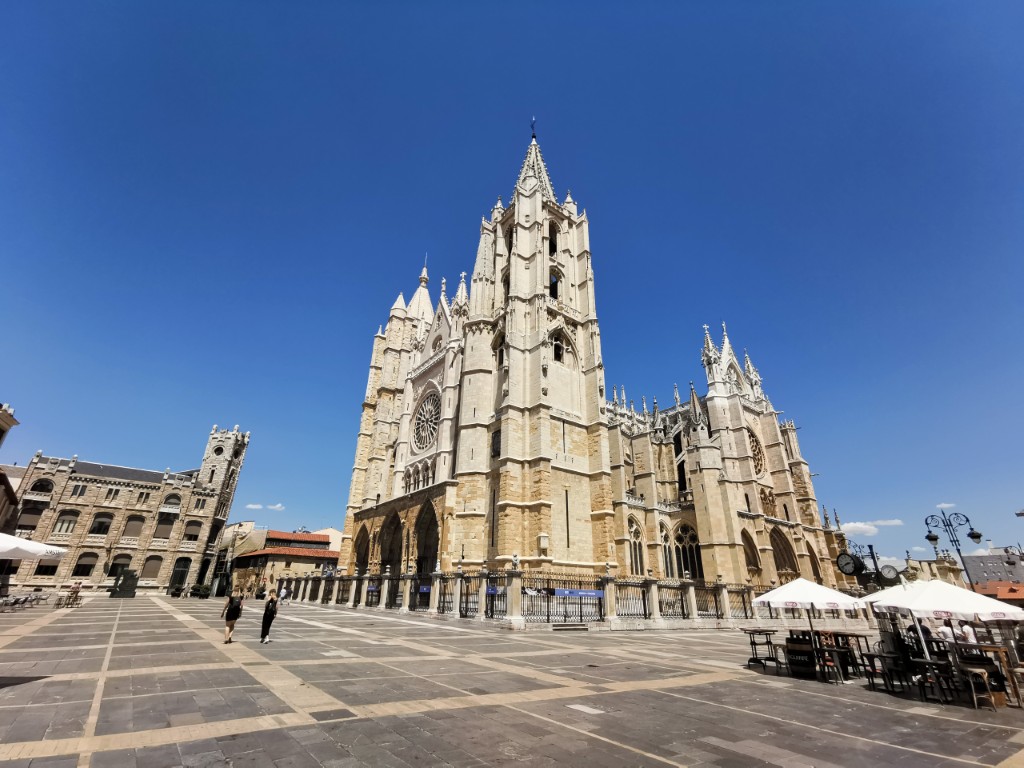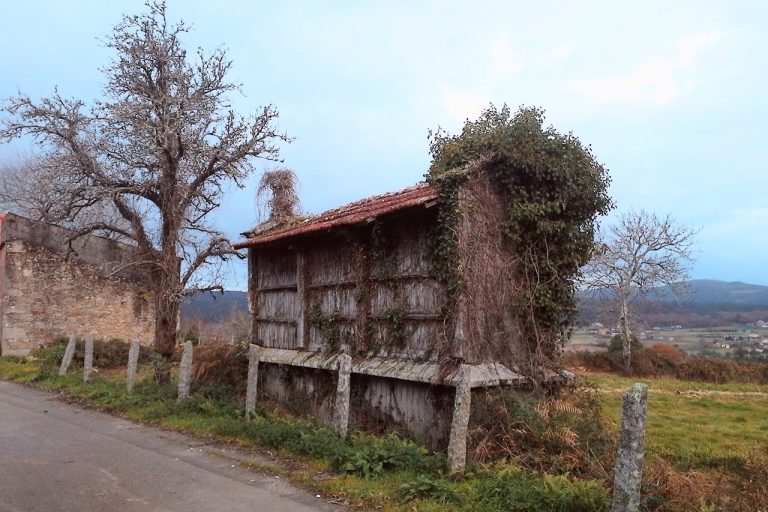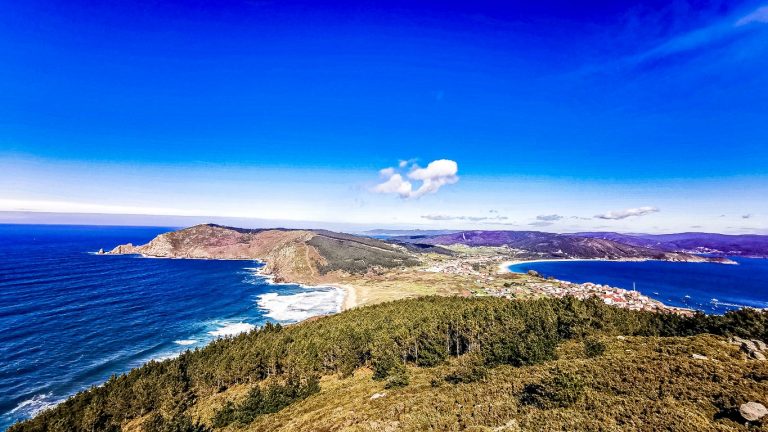
A New Stage Day – Introduction & Atmosphere
Today the French Way takes you from the medieval small town of Mansilla de las Mulas into the vibrant provincial capital of León. It is a comparatively short, flat stage, yet with a character of its own: first rural, then increasingly marked by roads and industry, until finally the Gothic towers of León Cathedral rise into view.
Many pilgrims see this stage as a transition stage – from the silence of the Meseta into the liveliness of a city. And yet, along this path lie small pearls of history: old bridges, monastic ruins, Roman crossroads, and traces of Jewish life.
Route & Elevation Profile
- Distance: 19.7 km
- Elevation gain/loss: +110 m / –120 m
- Difficulty: easy
- Character: Flat, long straight gravel tracks parallel to the road; increasing proximity to the city with traffic and industry.







Description of the Path – With All Senses
From Mansilla you leave the town via the eight-arched bridge over the Río Esla, one of the most important tributaries of the Duero. Afterwards, a gravel path accompanies you parallel to the N-601, flanked by fields and maize crops.
After just under 5 km you reach the area of Villamoros de Mansilla, a place with Roman and medieval roots. Worth seeing are the church of San Esteban and the reference to the nearby archaeological site of Lancia, an important Roman city.
The route continues to Puente Villarente, whose bridge already impressed the pilgrim writer Aymeric Picaud in the 12th century. At the time it was one of the largest on the Way of St. James. Also famous was the hospital founded here: a donkey was always to be kept ready to carry sick pilgrims to León – the first “pilgrim ambulance” in history.
Beyond the bridge the way leads along long straights to Arcahueja and Valdelafuente, where the landscape already becomes more urban. A small ridge, the Alto del Portillo, opens the first views of the towers of León.
Finally you arrive at Puente Castro, the old “Castrum Iudearum.” Here was one of the oldest and most important Jewish communities of León, later destroyed. Today Puente Castro is a city district, but its history lives on.
From here it is only a few kilometers into the heart of the city. Across the Río Torío the path leads you into León, where the Cathedral, the Basílica de San Isidoro, and the Plaza Mayor welcome the pilgrims.
Intermediate Places & Special Features
| Place | Distance from Start | Special Feature | Tip |
| Villamoros de Mansilla | 4.4 km | Church of San Esteban, proximity to Roman Lancia | Excursion for archaeology enthusiasts |
| Puente Villarente | 6 km | Important bridge, first pilgrim hospital with “ambulance donkey” | Ideal for a break |
| Arcahueja | 14.8 km | Viewpoint Alto del Portillo, church of Santa María | Last rural stop before León |
| Puente Castro | 16.2 km | Former Jewish quarter | Thoughtful moment of remembrance |
| León | 19.7 km | Cathedral, San Isidoro, Casa Botines, Barrio Húmedo | Major cultural destination |
Packing & Shopping Tips
- Along the way some opportunities for refreshment: especially in Puente Villarente.
- Take drinking water and sun protection, as some sections up to León are still open and with little shade.
- In León all services are available – a good place for a rest day.
Food, Accommodation & Services
- Mansilla de las Mulas: Several albergues and private accommodations.
- Puente Villarente: Albergue San Pelayo, El Delfín Verde.
- León: Huge choice – from classic pilgrim hostels such as the Carbajalas (donativo) to modern hostels and hotels in all categories.
The Special Aspect Today
The stage takes you into the very heart of the old Kingdom of León. Here history and symbolism are condensed.
The bridge of Puente Villarente is more than a structure – already described in the 12th century as “gigantic.” That the first documented “ambulance system” for pilgrims originated here is a fine example of the care along the Way of St. James: a donkey was kept ready to carry the sick to León.
Not far away, the reference to Lancia recalls the Roman roots of this landscape. This city was once an important center of the region. Even if only ruins remain, its name still holds the memory of the Roman foundations of the Camino.
Especially impressive is the history of Puente Castro. Here in the Middle Ages was the most important Jewish community of León. It was called “Castrum Iudearum” until it was destroyed. Today the place is only a city district, but whoever passes there can imagine the diversity of cultures that lived and thrived along the Camino.
Finally, the arrival in León: a city that began as a Roman legionary camp and later became the capital of the kingdom. The Cathedral of Santa María is a masterpiece of Gothic, with its colored stained-glass windows a true “cathedral of light.” The Basílica de San Isidoro preserves the “Panteón de los Reyes,” the resting place of the kings of León, full of frescoes referred to as the “Romanesque Sistine Chapel.” And with Gaudí’s Casa Botines and the Convento de San Marcos, León fits into the great history of Europe.
Thus, this stage, despite its apparent monotony, becomes a path of transitions: from countryside to city, from Roman antiquity to Jewish culture, from the medieval pilgrim hospital to the Gothic cathedrals.
Reflection at the End of the Stage
When in the evening you stroll through the streets of the Barrio Húmedo, enjoy tapas, and see the lights of the cathedral, you feel: the Camino is not only nature and solitude, but also an encounter with history, art, and urban life. León gives you the space to pause and intertwine your pilgrimage so far with culture and enjoyment.
📊 Tabular Overview
| Stage | Start | Goal | Distance | Elevation Gain/Loss | Difficulty | Intermediate Places |
| 21 | Mansilla de las Mulas | León | 19.7 km | +110 / –120 m | easy | Villamoros, Puente Villarente, Arcahueja, Puente Castro |
🌌 Camino of the Stars – Stage 21:
Mansilla de las Mulas → Villamoros → Puente Villarente → Arcahueja → Puente Castro → León
What were your impressions upon arriving in León? Was it the cathedral that overwhelmed you, or the liveliness of the Barrio Húmedo? Share your experiences with other pilgrims.


